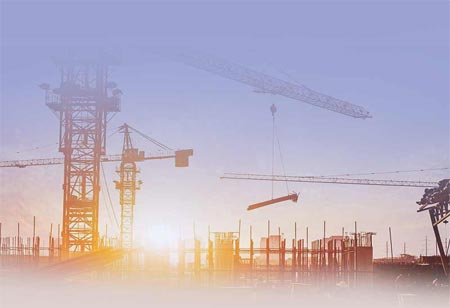Thank you for Subscribing to Construction Business Review Weekly Brief

Contract Management and Sustainable Development: Collaboration for the Future of Construction
We are now in an era where environmental responsibility is reshaping the construction industry. Sustainability is not just an afterthought, and contract management is emerging as a powerful tool and lever for driving sustainable development.
What we are seeing is that environmental responsibility is not just a mechanism to ensure compliance. It is a strategic tool which can help embed sustainability into every phase of project delivery, from procurement and planning to delivery, operations and performance monitoring.
Turning Contracts into Sustainability Drivers
Modern contract frameworks are ever evolving to reflect the growing demand for environmental accountability and to ensure we can demonstrate a sustainable legacy.
At Clancy, sustainability is not just a peripheral clause. It’s a core commitment that is embedded at every level. Environment and sustainable objectives are integrated into contract delivery, along with clear KPIs, and mechanisms to monitor and track progress.
This approach ensures that sustainability is not just promised but measured, tracked and reported, while providing opportunity for continuous improvement. Contracts now serve as binding commitments to environmental stewardship, aligning client expectations and aspirations with operational realities.
Collaboration is Vital to Sustainable Development
Collaboration is also key and critical to ensuring sustainability. It needs to be embedded at the very start of the process, as sustainable contract management thrives on collaboration and adaptability. We need to ensure we foster open dialogue and shared ownership, ensuring teams are encouraged to identify synergies and propose enhancements.
Through embedding sustainability into the very fabric of contract management, we are meeting today’s environmental requirements while helping shape a more resilient and sustainable tomorrow
In a previous magazine article, I had shared that it is crucial for sustainability to be embedded across all project levels. This ensures we have a continuous feedback loop that enables us to capture learnings while sharing knowledge and support for leaving a sustainable legacy now and into the future. At Clancy, we have found this to be helpful to reinforce the reasons behind asking teams to make more sustainable decisions through sharing our success elsewhere within the business.
At Clancy, the culture of continuous improvement is reflected in onboarding practices. New team members receive curated resources, from carbon roadmaps to environment and sustainability polices, to support their understanding of sustainability criteria and increase their knowledge and awareness. We need to ensure we are always bringing people together to be more sustainably aware and to help provide them with the tools, resources and mechanisms to make better and more sustainable decisions.
An Industry Responsibility
In today’s construction landscape, the convergence of contract management and sustainable development is no longer optional but essential. As infrastructure demands grow and environmental expectations intensify, the way contracts are structured, delivered and monitored must evolve to reflect a deeper commitment to sustainability.
We in the construction industry have the unique opportunity to lead by example, embedding sustainability into every clause, KPI, and outcome. As Ban Ki-Moon, the former Secretary-General of the United States said, “Sustainable development is the pathway to the future we want for all. It offers a framework to generate economic growth, achieve social justice, exercise environmental stewardship and strengthen governance”.
Building Tomorrow through Contracts Today
In the construction industry, every contract is more than a legal agreement. It is a promise to future generations. Through embedding sustainability into the very fabric of contract management, we are meeting today’s environmental requirements while helping shape a more resilient and sustainable tomorrow.
Sustainable development isn’t a destination. It’s a journey we commit to with every contract we sign. As leaders, collaborators, and innovators within this industry, we have the tools, mechanisms and responsibility to ensure that every project leaves a legacy of progress in infrastructure, as well as in environmental stewardship and sustainable development. The future of construction lies in our ability to align commercial success with environmental wellbeing, and that future begins with the contracts we write today.
The most powerful change agents in construction aren’t machines or materials. They’re the values we embed in our contracts. This shift requires courage, clarity and collaboration. It means challenging traditional procurement models, redefining success metrics, and empowering and providing our teams to think beyond the build. It means asking not just “what are we delivering?” but “how are we delivering it?”
We need to embrace contract management as a tool, mechanism and catalyst to drive innovation, foster collaboration and accountability and build solid partnerships that deliver positive sustainable solutions. Because when sustainability becomes a contractual standard, it becomes a cultural norm. That’s when real transformation begins.








